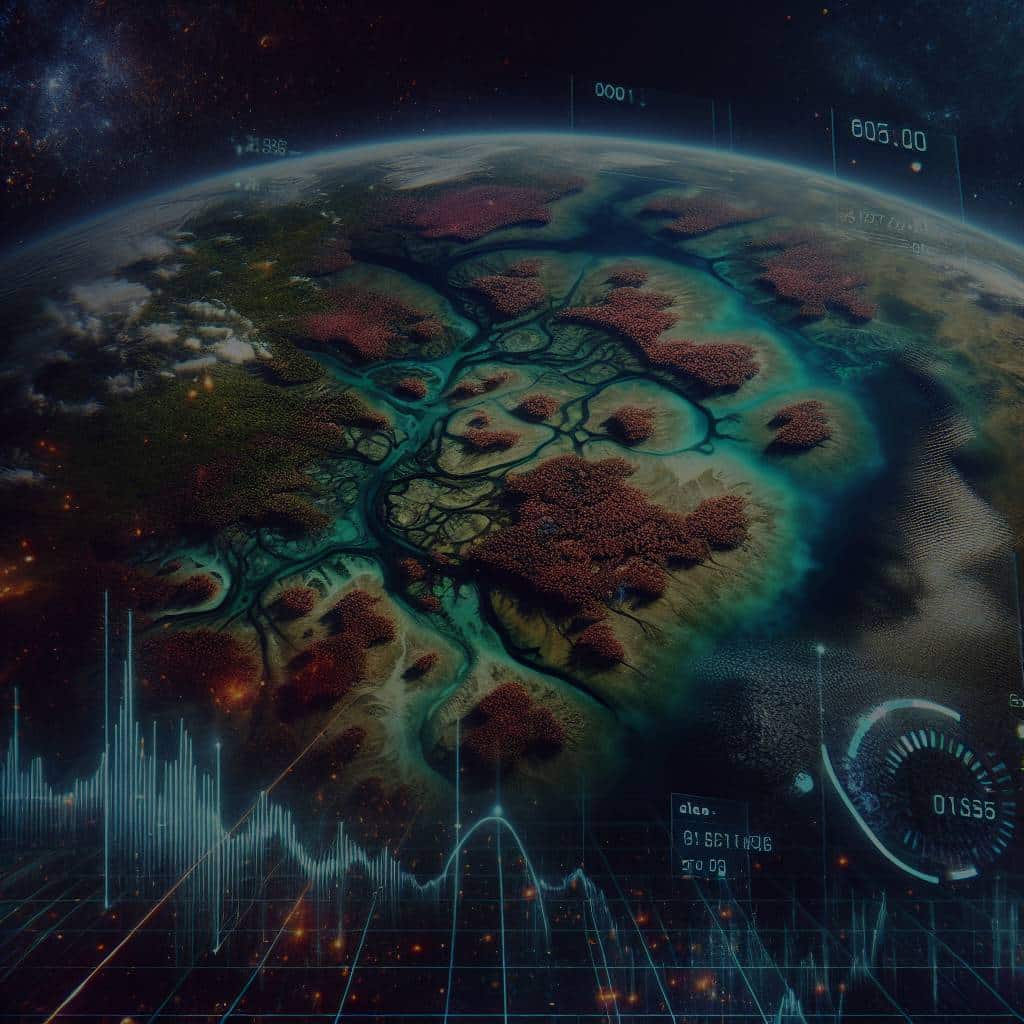In the realm of environmental science, artificial intelligence (AI) and satellite imagery have become two peas in a pod. The potential of these systems to help monitor and predict environmental changes in real-time is truly astounding. With the increasing prominence of climate change, this powerful combination could help to identify vulnerable areas, understand the causes and effects, and aid in establishing effective mitigation strategies. In this article, we’ll delve into how AI-enhanced satellite imaging is set to revolutionize the way we view and tackle environmental changes.
Satellite imaging and climate change: A symbiotic relationship
Satellite imaging technology has come a long way since the inception of the first environmental monitoring satellites in the 1960s. Today, satellites are constantly whirring around our planet, capturing high-resolution images that can help us understand various facets of climate change.
This might interest you : Can Advanced Prefabrication Methods Streamline Sustainable Housing Development?
These satellites work like celestial photographers, capturing images of the Earth’s surface. With their bird’s eye view, they can monitor the melting of ice caps, track deforestation, observe changes in sea levels and identify areas of severe drought. They provide us with a wealth of data that can be used to analyse environmental patterns and detect changes in our climate over time. However, the massive volume of this data and the complexity of interpreting it present significant challenges. This is where artificial intelligence comes in.
How AI helps in interpreting satellite data
Artificial intelligence, specifically machine learning (ML), has emerged as a game changer in the interpretation of satellite data. Machine learning algorithms can process and interpret vast amounts of data at a much faster rate than any human could.
Topic to read : Will Sound Wave Levitation Offer New Methods for Material Handling in Manufacturing?
For instance, Google’s AI platform uses machine learning to analyze satellite imagery and data, identifying trends and patterns that might be missed by the human eye. This could range from detecting subtle changes in vegetation cover to spotting early signs of drought in specific regions.
AI doesn’t just save time. It can also delve into the depths of the data, identifying correlations and making predictions that would be nearly impossible for humans alone. This potential to predict environmental changes is a significant leap forward in our fight against climate change.
Identifying and Monitoring critical areas
One of the most critical applications of AI-enhanced satellite imaging is its ability to identify and monitor areas that are most susceptible to environmental changes. For instance, satellites equipped with AI can identify areas with high deforestation rates, monitor their progress over time, and predict the potential implications on the local and global climate.
Additionally, AI systems can learn from the satellite data to recognize early warning signs of environmental disasters. For instance, they could detect unusual temperature or humidity patterns that may precede a wildfire, enabling preventive measures to be taken in time.
Overcoming Challenges with AI-Enhanced Satellite Imaging
Despite its immense potential, the application of AI in interpreting satellite data is not without its challenges. One of the main impediments is the sheer volume of data that satellites generate. However, with machine learning algorithms, we can process and analyze this data more efficiently than ever before.
Another challenge is the need for high-quality, verified data to train the AI systems. Fortunately, organizations like NASA and European Space Agency, are sharing their satellite data, providing researchers with an unprecedented amount of high-quality data for this purpose.
Moreover, data privacy and security concerns add another layer of challenge. Ensuring the data collected from satellites is used responsibly and ethically is paramount.
The Future of AI and Satellite Imaging in Climate Change
Artificial intelligence and satellite imaging hold a promising future in the battle against climate change. As AI models continue to learn and evolve, their ability to interpret and predict environmental changes will only improve.
The fusion of artificial intelligence and satellite imaging is not a distant reality, but a present-day tool that could potentially transform our understanding of climate change. By working in tandem, these technologies promise to provide us with unprecedented insight into the state of our planet, helping to guide our actions in the face of climate change.
The Role of Google Scholar and Deep Learning in Environmental Monitoring
In the realm of environmental monitoring, Google Scholar and deep learning stand out as two vital tools. Google Scholar, a freely accessible search engine that allows users to explore scholarly articles, has become a repository of valuable research on climate change, machine learning, and satellite imagery. These research materials can be employed to develop innovative AI models and algorithms to analyse satellite data.
Deep learning, a branch of machine learning, is particularly suited to interpreting satellite images. Unlike traditional machine learning algorithms, deep learning models can automatically learn representations from the data. This advancement means that deep learning can handle the high dimensional data from satellite images without any need for manual feature extraction.
For instance, deep learning algorithms can be used to process satellite images in real-time, recognizing complex patterns and features that traditional computer vision methods might miss. This could include subtle changes in sea levels, weather patterns, or vegetation cover – all critical indicators of climate change.
In terms of climate change mitigation and adaptation strategies, deep learning could be instrumental. By accurately predicting sea level rise, changes in weather patterns or the occurrence of natural disasters, these algorithms could provide early warning and help authorities to implement effective responses.
Conclusion: AI-Enhanced Satellite Imaging as a Game-Changer in Climate Change
From monitoring sea levels to predicting weather patterns, AI-enhanced satellite imaging is poised to become a game-changer in our response to climate change. The fusion of artificial intelligence, remote sensing, machine learning, and satellite imagery provides us with unprecedented capabilities to monitor and predict environmental changes in real-time.
However, to fully realize the potential of this technology, several challenges need to be addressed. These include handling the vast amount of satellite data, ensuring data privacy and security, and acquiring high-quality, verified data to train AI models. Organizations like NASA and the European Space Agency, by sharing their satellite data, are playing a crucial role in overcoming these challenges.
As we move forward, the integration of artificial intelligence and satellite imaging will continue to play an increasingly significant role in environmental monitoring. By identifying areas of vulnerability, providing early warning of potential disasters, and aiding in the development of adaptation strategies, these technologies could prove invaluable in our fight against climate change.
The future of our planet may well depend on our ability to harness the power of technologies like AI and satellite imaging. As our understanding of climate change evolves, so too must our strategies for combating it. With AI-enhanced satellite imaging, we have an exciting tool that could help us meet this challenge head-on.






